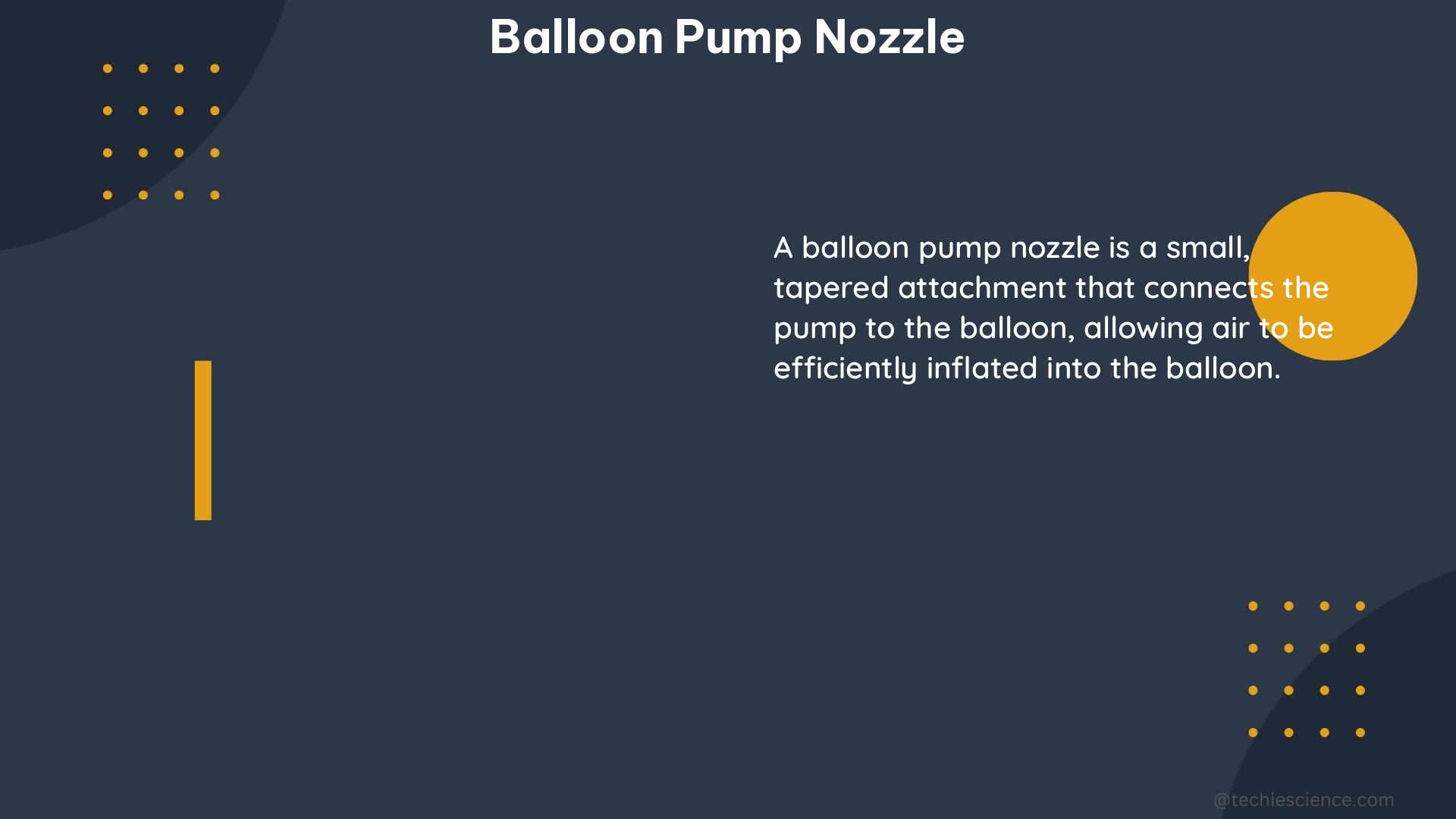The balloon pump nozzle, also known as the balloon inflation pump or balloon console, is a crucial component of the intra-aortic balloon pump (IABP) system. It is responsible for rapidly inflating and deflating the balloon synchronously with the cardiac cycle, providing hemodynamic support to patients with acute heart failure.
Balloon Size and Catheter Specifications
The balloon size varies between 34, 40, or 50 ml, according to patient height. The balloon size determines the volume of gas that is used for inflation and deflation, and it should be carefully chosen before placement to ensure that the balloon fills 80-90% of the aortic diameter when inflated.
The dedicated double-lumen balloon catheter can have a diameter varying between 7 and 9.5 French (Fr). The catheter is inserted through the femoral or brachial artery and is advanced until it reaches the correct position in the descending thoracic aorta. The distal tip of the catheter should be placed about 2-3 cm below the origin of the left subclavian artery with the proximal extremity of the balloon above the origin of the renal arteries.
| Balloon Size | Catheter Diameter |
|---|---|
| 34 ml | 7-9.5 Fr |
| 40 ml | 7-9.5 Fr |
| 50 ml | 7-9.5 Fr |
Balloon Inflation Pump and Console

The external machine is composed of a console, a balloon inflation pump, and a helium cylinder. The console allows controlling and adjusting the hemodynamic parameters, and the pump is capable of rapidly inflating and deflating the balloon synchronously with the cardiac cycle with a predetermined volume of gas (30-50 mL of helium).
The console features the following controls and adjustments:
- Balloon inflation/deflation timing
- Balloon inflation volume (30-50 mL)
- Balloon inflation/deflation rate
- Hemodynamic parameter monitoring (aortic pressure, cardiac output, etc.)
- Alarm and safety settings
The balloon inflation pump utilizes a high-speed solenoid valve to rapidly fill and empty the balloon with helium, ensuring precise synchronization with the patient’s cardiac cycle.
Pressure and Flow Measurements
High-fidelity pressure and flow sensors are used to obtain simultaneous ascending aortic and left ventricular (LV) pressure signals, as well as flow measurements at the same location as aortic pressure. The aortic measurements are acquired close to the aortic root, just distal to the coronary ostia.
The pressure and flow signals are processed by corresponding pressure and flow consoles, and the hemodynamic signals and the ECG are recorded at a sampling rate of 200 or 400 Hz for off-line analysis.
| Measurement | Sampling Rate |
|---|---|
| Aortic Pressure | 200-400 Hz |
| LV Pressure | 200-400 Hz |
| Aortic Flow | 200-400 Hz |
Data Analysis
Custom software written in MATLAB is used to smooth the aortic pressure and flow signals using a Savitzky-Golay filter. The flow velocity is derived from the flow measurements using the nominal size of the flow probe as an indicator.
The processed data is then used to analyze the hemodynamic effects of the IABP, including changes in aortic pressure, cardiac output, and myocardial oxygen demand.
Advanced Features and Considerations
- Balloon inflation/deflation timing can be synchronized with the patient’s ECG or arterial pressure waveform to optimize hemodynamic support.
- The balloon inflation volume can be adjusted based on the patient’s aortic diameter and cardiac output to ensure optimal performance.
- The balloon inflation/deflation rate can be adjusted to match the patient’s heart rate and cardiac rhythm.
- Pressure and flow sensors must be calibrated regularly to ensure accurate measurements.
- The balloon catheter must be carefully inserted and positioned to avoid complications, such as aortic dissection or limb ischemia.
- Regular maintenance and cleaning of the balloon pump nozzle and associated components are essential to ensure reliable operation.
Conclusion
The balloon pump nozzle is a complex and sophisticated device that requires careful calibration and adjustment to ensure optimal performance. The technical specifications and DIY details outlined in this guide provide a comprehensive overview of the key features and parameters that are important for the function and operation of the balloon pump nozzle.
References
- Intra-Aortic Balloon Pump: Principles and Practice
- Balloon Pump
- Hemodynamic Effects of Intra-Aortic Balloon Pump Support
- Intra-Aortic Balloon Pump: Principles and Practice
- Intra-Aortic Balloon Pump: Principles and Practice

The lambdageeks.com Core SME Team is a group of experienced subject matter experts from diverse scientific and technical fields including Physics, Chemistry, Technology,Electronics & Electrical Engineering, Automotive, Mechanical Engineering. Our team collaborates to create high-quality, well-researched articles on a wide range of science and technology topics for the lambdageeks.com website.
All Our Senior SME are having more than 7 Years of experience in the respective fields . They are either Working Industry Professionals or assocaited With different Universities. Refer Our Authors Page to get to know About our Core SMEs.